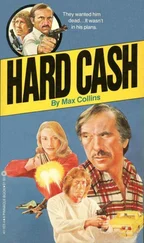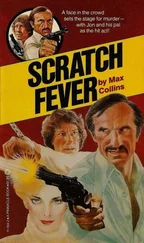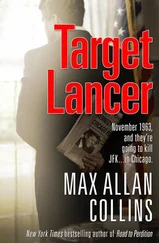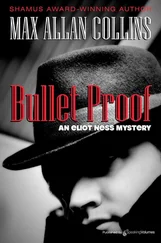“No. Yes. I’m just... trying not to get caught up in your... crusade. It’s dangerous, what you’re doing. It’s not what a journalist does.”
“What does a journalist do?”
“You keep an open mind when you look into something. You don’t set out to prove something. You set out to find the facts, whatever they are.”
“Yes, and your problem is you can’t face facts, when you find ’em.”
“No! My problem is keeping myself reminded, in the midst of your leftist hysteria, that there are two sides to everything. Even to Kemco.”
“It’s that talk you had with Mrs. Woll, isn’t it? That’s what’s bothering you.”
“No.”
“I think we should talk about that.”
“I told you what she told me.”
“But you can’t handle it, can you?”
The windshield was fogged up from their talking; that was okay, because if anyone drove by, it would reinforce the idea that he and Boone were making out. Which was hardly the case at the moment. He turned to her. Calm. Rational.
He said, “Mrs. Woll opened up to me, a little bit, possibly because I’m male, and also because I know how to interview better than you. But for the most part, she didn’t say anything that wasn’t on the tape of your conversation with her, a year ago.”
“There was the news that she worked with Mary Beth at Kemco.”
“News to me . You knew about it, ’cause Mary Beth would’ve told you. You just wanted me to find out for myself.”
“Maybe,” she smiled. “When I interviewed her originally, not long after her husband’s ‘suicide,’ she was a secretary at City Hall. Had been for some years. Since then, she’s been given a, shall we say, enviable position at Kemco. Head of the secretarial pool, no less.”
“And into that, I suppose, you read all kinds of conspiratorial under- and overtones. Tell me, did Kemco kill Kennedy?”
“Which one?”
“Boone, Kemco offering an employee’s widow a position with the company could be a strictly benevolent act on their part. It isn’t necessarily anything sinister.”
“She was qualified for the job, I grant you. But surely you find it slightly suspicious...”
Crane looked away from her. Said nothing.
“Of course you do,” Boone said. “That’s what’s bothering you. Isn’t it?”
He sighed, shook his head. Turned and looked at her.
“Yes,” he admitted. “That, and that we’ve made a connection between Mary Beth and one of the other ‘suicide’ victims. An indirect connection, but a connection.”
Boone nodded. “She’s connected to another victim, too: Paul Meyer. He was an exec, and Mary Beth was the darling of the secretarial pool, where the execs were concerned.”
“Which could explain how she stumbled onto some high-level shenanigans. Well. Anyway, I’ll be talking to Meyer’s wife tomorrow; we might get some insights, there. This is all very flimsy, from an evidence standpoint, you know.”
“Maybe. But maybe we should both try to keep an open mind.”
“Yeah. Maybe you’re right.”
“A truck.”
“Huh?”
“That could be a truck.”
Light caught the corner of Crane’s eye and he turned. Down the road, about a mile, were the high-beams of what appeared to be a truck, approaching Kemco.
“Get in the back seat,” Boone told him.
He did. She passed the Nikon to him.
The truck — it was a truck — came into view. It was a big flatbed with the sides built up; a tarp was flung over the back of it, tied on. This they saw as it pulled into the graveled loading area.
“Did you notice the clearing booth was empty tonight?” Boone asked him.
Crane, in the back seat, feeling nervous, said, “No I didn’t.”
“Well it was.”
“That isn’t one of Kemco’s trucks, is it.”
“It sure isn’t,” Boone said. She was smiling. “It’s an independent. Come to pick something up.”
Boone drove by the loading-dock area at about twenty-five miles an hour. Crane, out the back window of the Datsun, took half a dozen pictures of the flatbed truck, which was waiting near the big green tin shed while one of the two men in its cab, a burly guy in a thermal jacket, hopped out to talk to a Kemco hard hat, who was gesturing, giving instructions for where the truck was to go to pick up its load.
The Kemco plant receded behind them.
Boone looked at him in the rearview mirror. “How did you do?”
“I’m not sure,” he said, crawling back up in front, giving her the camera as she drove. “I hope there was enough light.”
“You had it wide open, didn’t you? There was plenty of available light. I’m sure they’ll come out.”
Crane hoped so. It was a clear night, with stars and a moon; that and the lights of Kemco itself should’ve made for some good shots.
“What now?” he asked.
“Wait half an hour and go back.”
She pulled over to the side again; they were about a mile down from Kemco, now. She turned the motor off.
“Don’t we have enough already?” Crane asked.
“You’re kidding. We’re just getting started.”
“If you say so.”
“Are you nervous?”
“Of course I’m nervous. I’m scared shitless. Aren’t you?”
“Somewhat. There’s really nothing to worry about.”
“You must not’ve seen the three-hundred-pound trucker that climbed out of that rig.”
“Nobody spotted us. Nobody’s going to spot us.”
“Next on the program, I suppose, is some shots of the truck pulling out of Kemco, loaded up.”
“Right.”
“Surely we’re not just going to go tap dancing by again, are we?”
“No. We’ll pull into their parking lot. We can get some good shots from there and we won’t be noticed. I’ve got a zoom lens in the glove compartment. I’ll take the next shots. You drive.”
“All right. We might as well switch places now.”
He got out of the car and walked around to her side. The night air felt chill but he rather liked it; it was like splashing his face with water in the morning to wake up — it reminded him he was still alive. He opened the car door for her and she got out.
They stood there for a while, leaning against the front of the car, enjoying the stillness, their backs to Kemco, looking out at the night. Pale ivory moonlight bathed the farmland around them with a quiet beauty. It didn’t look so bad on Boone, either.
Half an hour was up.
Crane drove back to Kemco, pulling into the parking lot, which was, as it had been last night, nearly full; but they found a place, and from it they could see the American flag, which Kemco flew twenty-four hours a day, and, just across the way, the loading-dock area. The truck was nowhere to be seen.
“Did we miss it?” Crane asked her.
“I don’t think so.”
“Couldn’t it have pulled out and gone down the other direction?”
“Possibly. If so, it wasn’t loaded up; hasn’t been time for that.”
“Where is it, then?”
“Somewhere on the Kemco grounds picking up its cargo. My guess is they didn’t want to store the stuff in their normal loading area. What they’re doing here isn’t something they want to advertise, you know, not even to their own employees.”
They sat and watched.
Boone opened the glove compartment and got the zoom lens out and began attaching it to the Nikon. Crane got a glimpse of something else in the glove compartment, something that, although metallic, didn’t look anything like a camera attachment.
“Have you got a gun in there?” he asked her.
She didn’t look up from the Nikon she was fussing with. “I might have.”
“You might have a gun in there.”
Читать дальше












